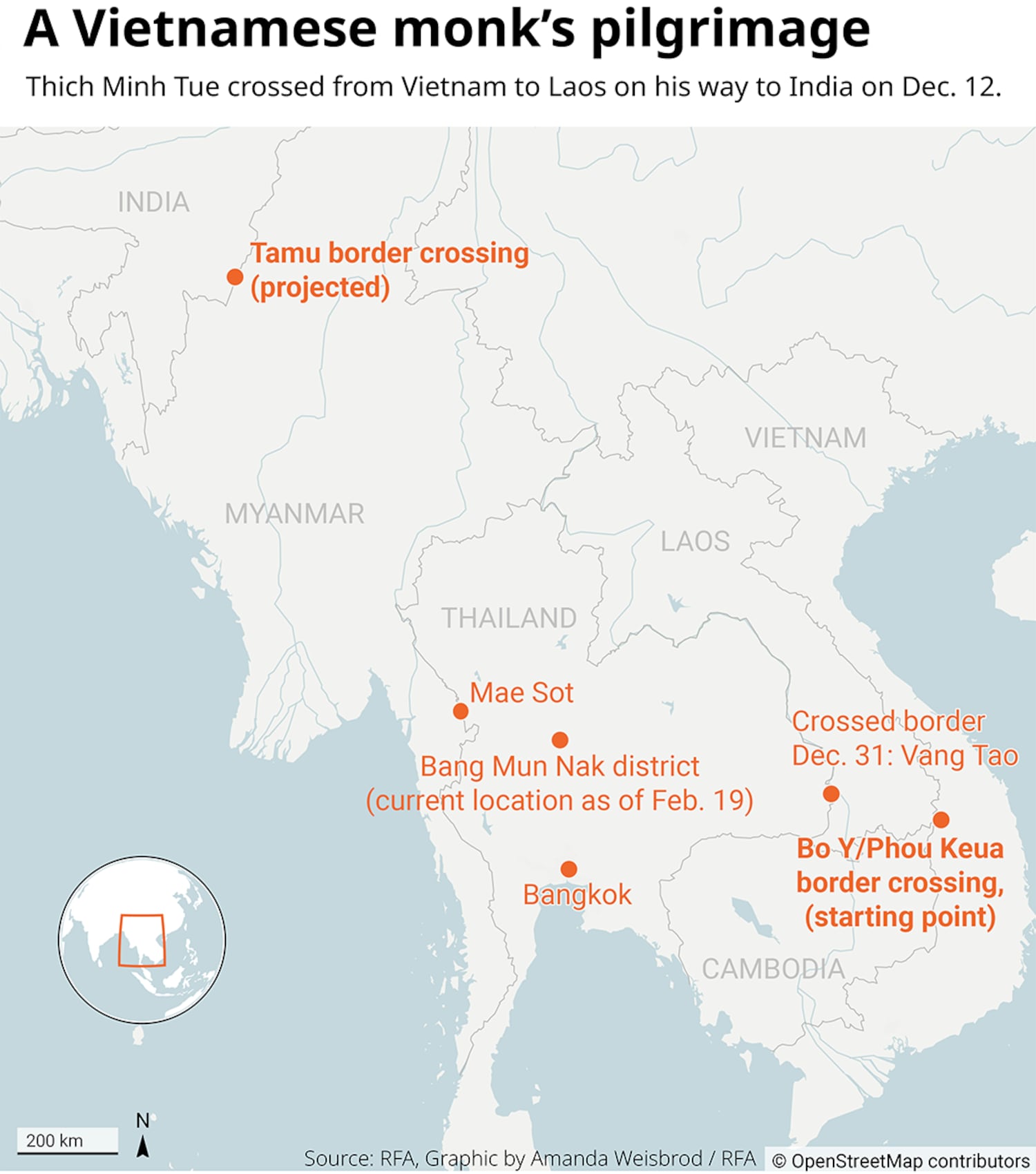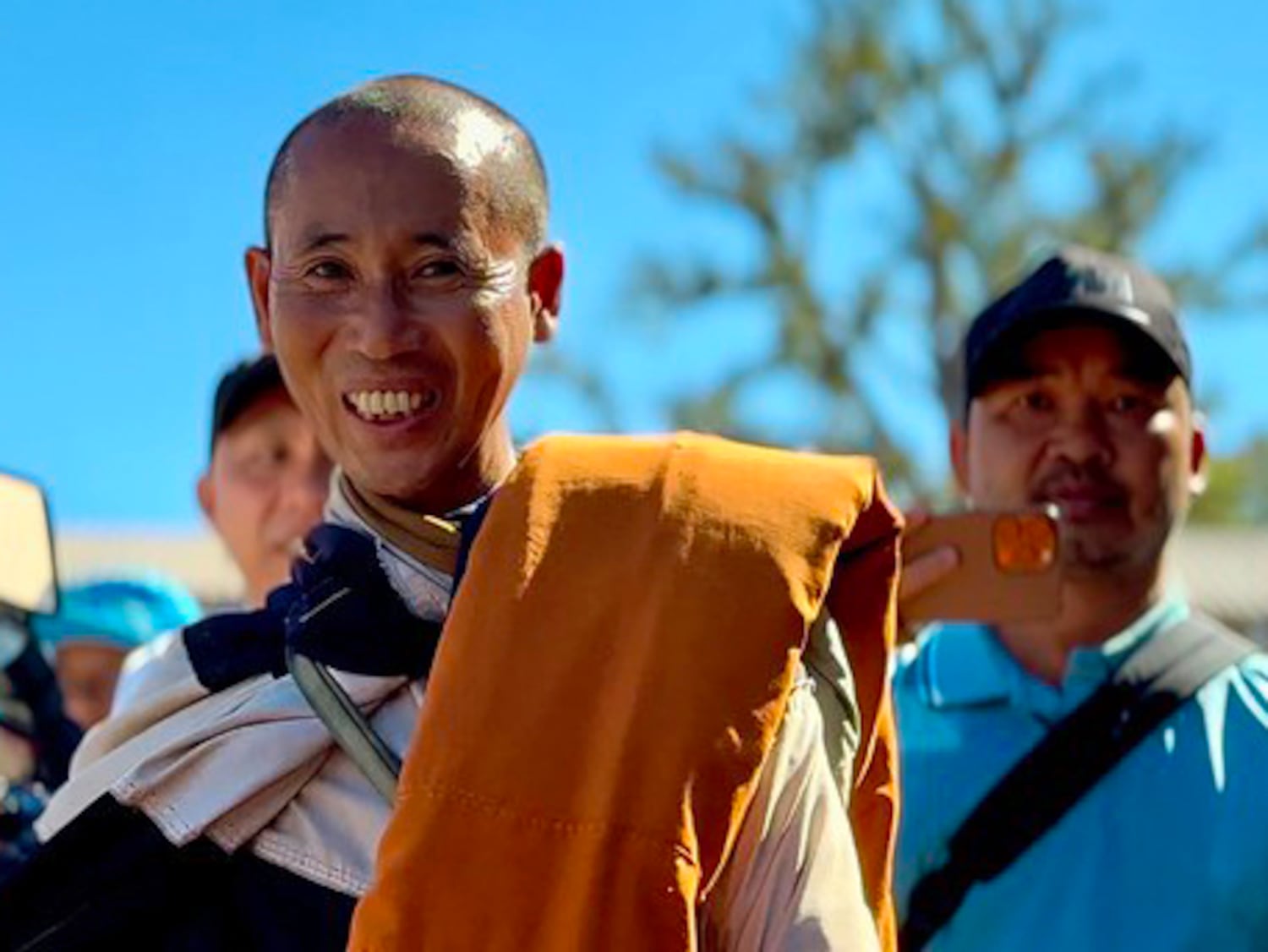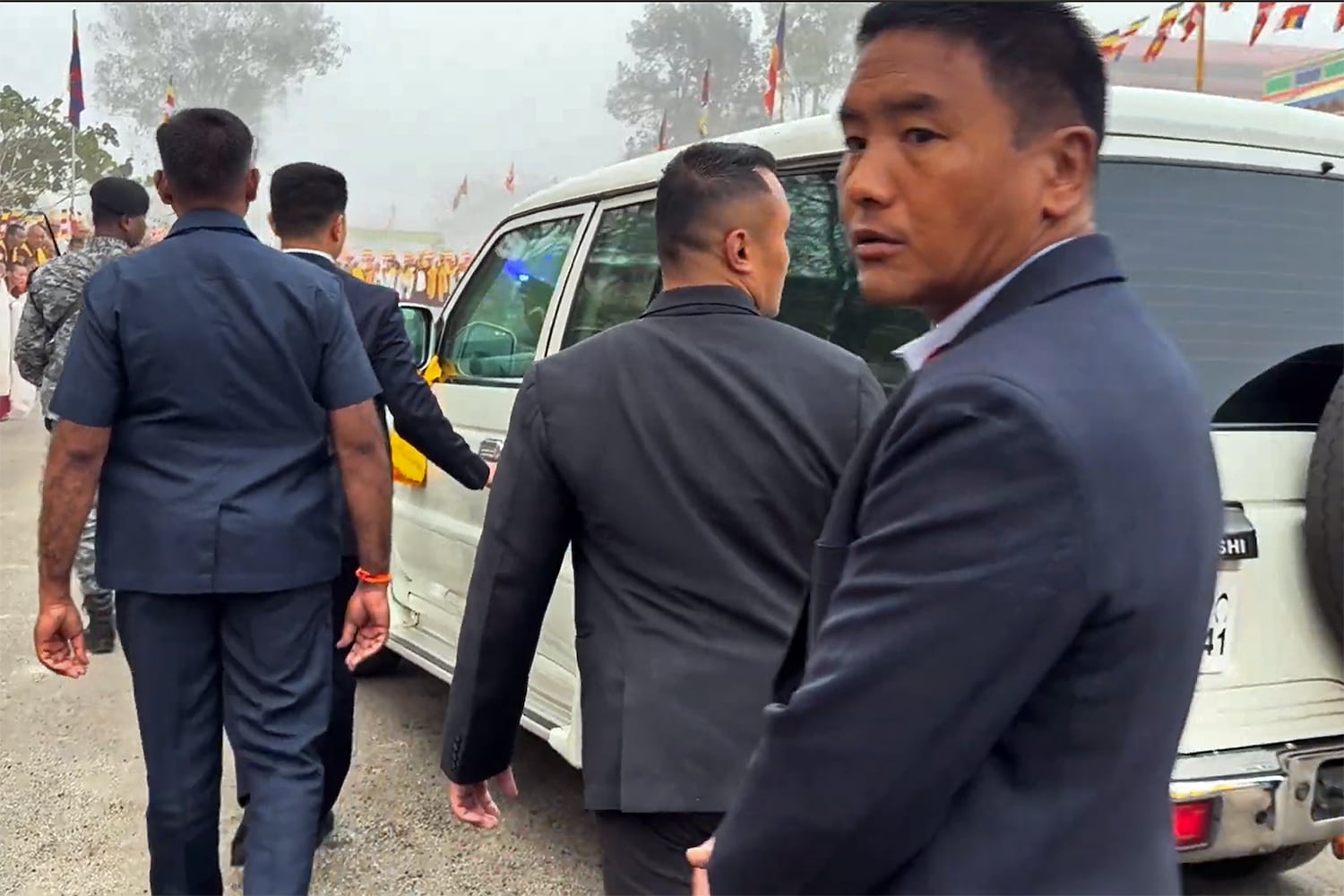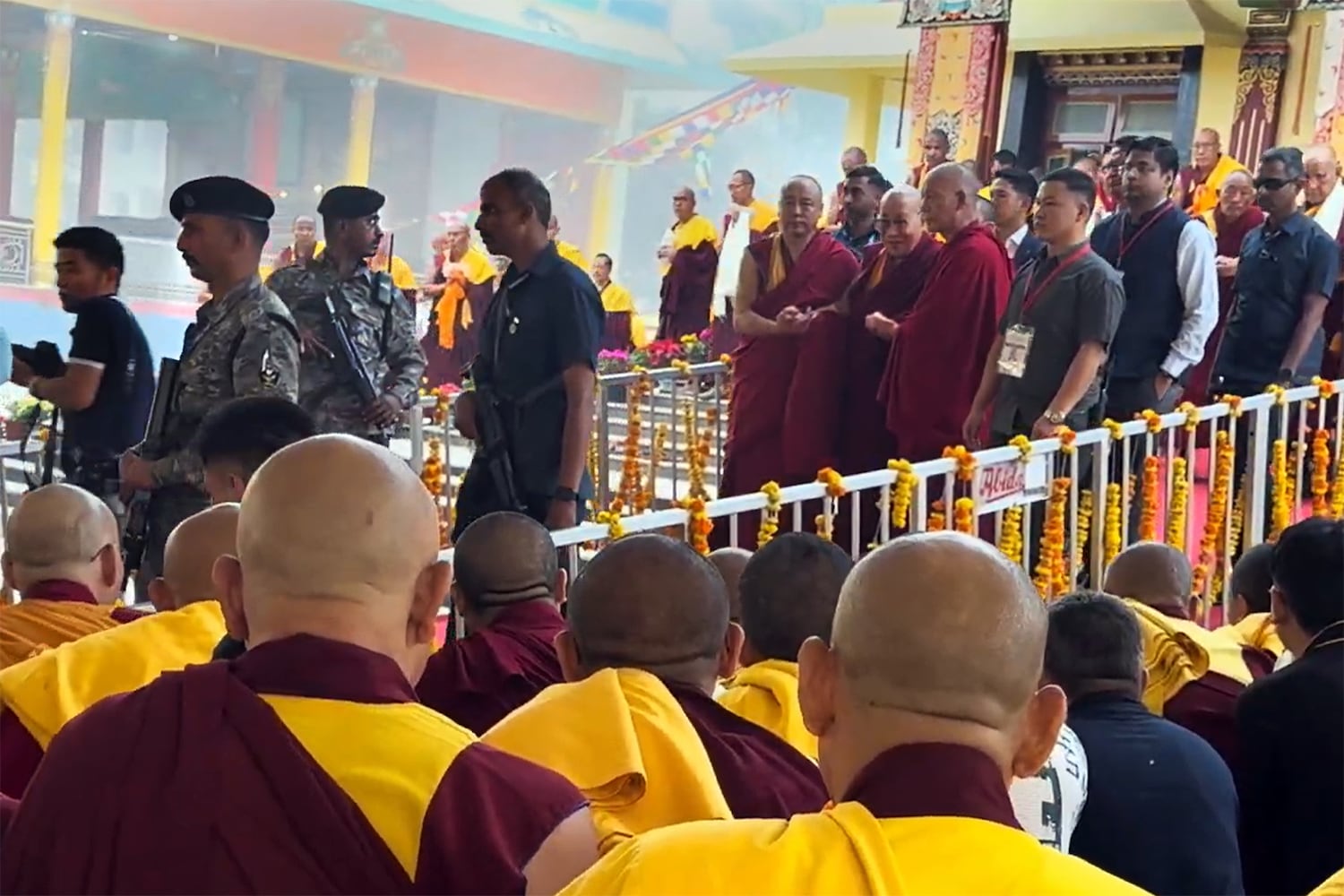
IMAGE/Dawn/DUck Duck Go
She eloped
Over a hundred years ago, on February 20, 1918, she escaped from her parents house to unite with her love. Two months later, on April 19, at her sweetheart’s huge house atop Malabar Hill in Bombay, she got married and went to Nainital for honeymoon.
All over India, the news of their wedding caused a huge uproar and spread fast – it became the main talk of the town for many reasons:
- The girl was Parsi;
- the man was Muslim;
- she was 18;
- he was 41;
- she was the daughter of one of the richest men in India then;
- he was a self-made wealthy person – a very successful lawyer;
- the girl’s family broke all relations with her;
- the man was estranged from his;
- she was expelled from the Parsi community;
- he had already left his religious sect Nizari Ismaili;
- the girl was at ease in western or local stylish clothing;
- the man was well known for his well-tailored English suits.
The girl was Ruttie Petit; her husband was M.A. Jinnah.
They both were nationalists and wanted an end to the British colonial rule in India. Both were handsome with great sense of dressing, albeit, pricey.
Ruttie’s beauty and dressing had impressed many personalities:
Lady Reading:
“Her attire was a Liberty scarf, a jewelled bandeau, and an emerald necklace. She is extremely pretty, fascinating, terribly made up. All the men raved about her, the women sniffed.”
and
“Very pretty, complete minx. A tight dress of brocade cut to the waist back and front, no sleeves, and over it and her head flowered Chiffon as a Sari.”
— Syed Sharifuddin Pirzada, Some Aspects of Quaid-I-Azam’s Life” (Islamabad: National Commission on Historical and Cultural Research, 1978), p. 50.
Lady Wavell was taken by Jinnah’s striking form:
“[Mr. Jinnah was] one of the handsomest men I have ever seen; he combined the clear-cut, almost Grecian features of the West with Oriental grace of movement.”
— “Wanted: Jinnah’s Pakistan,” Dawn, July 31, 2009.
Mrs. Freeth, (wife of British Major-General G. H. B. Freeth, Deputy Adjutant-General) wrote to her mother how much she was impressed by Jinnah, whom she met at the viceregal dinner in Simla in May 1929.
“After dinner, I had Mr. Jinnah to talk to. He is a great personality. He talks the most beautiful English. He models his manners and clothes on Du Maurier, the actor, and his English on Burke’s speeches. He is a future Viceroy, if the present system of gradually Indianizing all the services continues. I have always wanted to meet him, and now I have had my wish.”
— Akbar S. Ahmed, “Jinnah, Pakistan and Islamic Identity: The Search for Saladin,” New York Times.
Ruttie
Ruttie was born as Rattanbai in an orthodox Parsi (Zoroastrian) family on February 20, 1900, one of four children, the only daughter of Sir Dinshaw Petit (1873-1933) and was affectionately called “Ruttie.” Today is her 125th birth anniversary.
Ruttie was a bold, brilliant woman who was well versed in many subjects, including literature and politics. She didn’t get the recognition she deserved either in India or in Pakistan. mostly due to her marriage to Muhammad Ali Jinnah, founder of Pakistan.
The Pakistani governments have ignored Ruttie because she was not a Muslim and the Indian governments, particularly the current Modi regime, have avoided mention of anyone/anything associated with Jinnah.
Even decades after the creation of Pakistan, authorities wouldn’t consider a suggestion for naming an area — Ruttie Jinnah Grove in Karachi!
The young, bubbly, and vivacious Ruttie was interested in politics and the British colonial rule in India. Accompanied by her maiden aunt, Hamabai Petit, a multimillionaire philanthropist, she used to attend public meetings in Bombay.
M.A. Jinnah, a close family friend, often spokeat these gatherings.
Jinnah
Jinnah’s parents Mithibai and Jinnahbhai Poonja hailed from Paneli, Gondal, in Kathiawar part of Bombay Presidency then, but now a part of Gujarat state. In 1875, they moved to Karachi where a year later Mohammed Ali Jinnahbhai was born on 25 December 1876. Karachi, a small Indian town then, is now Pakistan’s largest city.
In his teens, in 1892, his father’s English business associate Frederick Leigh Croft offered Jinnah a London apprenticeship with his firm, Graham’s Shipping and Trading Company, which Jinnah accepted. To prevent him from not getting tempted to marry an English girl, Jinnah’s mother got him married to 14-year-old Emibai, the daughter of a wool businessman, and a distant relative.
After a few months at Graham’s, Jinnah got bored with routine work; quit his job, and got himself admitted to Lincoln’s Inn, in order to study law. He then informed his father about the admission with a promise he wouldn’t ask for any more money.
Some friends of Jinnah took him to a theatrical company where the manager asked him to read some extracts from Shakespeare’s collection. The manager and his wife were extremely delighted. Jinnah was invited to work and he signed the contract but then due to his father’s letter and a stern warning, especially the sentence, “Do not be a traitor to the family”, he left acting. (Stanley Wolpert, Jinnah of Pakistan. New York: Oxford University Press, 1984, p. 56.)
Less than a year after Jinnah left, Emibai died of cholera, and a few months later, his mother died during childbirth. His mother’s demise was a great loss for Jinnah but he determinedly held on and passed the bar exam, becoming the youngest Indian to achieve such feat.
M.A. Jinnah (he shortened his name in London), upon return to Karachi in 1896, discovered his father was bankrupt. A year later, Jinnah left for Bombay where he had once lived as a teen with his paternal aunt Manbai. The first three years were an immense struggle. The beginning of the new century was a good omen for him. John Molesworth MacPherson, the acting Advocate-General of Bombay offered Jinnah work in his chambers. Jinnah was the first Indian ever, according to Sarojini Naidu, to be granted such a favor. (Hector Bolitho, Jinnah: Creator of Pakistan, p. 15.)
In early 1900, he got a recommendation letter from MacPherson and became a temporary Presidency Magistrate. In 1901, Sir Charles Olivant offered Jinnah a salary of Rs 1,500 (Bolitho, p. 17) a month. He refused the offer saying he was confident that very soon he could make that much in a day, which proved to be true.
A liberal non-practicing Khoja Muslim, Jinnah left Shia Nizari Ismaili branch when Imam, Sir Sultan Mohammed Shah (Aga Khan III) (1877 – 1957), refused to bless his sister’s wedding because she had married an outsider.
Soon, Jinnah became very successful, had a huge house, and looked after his siblings and relatives, but preferred to live alone. He brought his little sister Fatima and another sister Shirin, who was fourteen years old, to live with him. Shirin stayed with Jinnah till her marriage a few years later.
Jinnah, who had been associated with the Indian National Congress (INC) since 1904 became an official member in 1906. In 1913, he joined All-India Muslim League (AIML). Many Muslim leaders, including Aga Khan III, had wanted this brilliant and successful lawyer to join the League for a long time.
The Affair
Jinnah used to hang out with crème de la crème of the Bombay society. Many of his clients were wealthy Hindus, Parsis, and Muslims. Parsis also let Jinnah into their exclusive club. Many club members were his clients, including Sir Dinshaw Petit, who was also a personal friend.
In summer 1916, the Petit Family invited Jinnah for a vacation at their residence in Darjeeling. Ruttie and Jinnah spent a lot of time together during these two months at the Petit chateau, which was 7000 feet high, with view of Mount Everest. Jinnah and Ruttie indulged in horse-riding and other activities.
Poetic portraiture:
Romance in the lap of the Himalayas
the beautiful Darjeeling
the aesthetic hill station
the intellectual exchange
the mutual attraction
Jinnah’s long road of loneliness
and Ruttie’s erupting adulthood
brought them closer, and closer
the air emitted fragrance of love
her talk enraptured Jinnah
his personality awed Ruttie
in the lap of the Himalayas
the romance blossomed
she was almost sixteen
he was thirty-nine
love found them
vows bonded them
she was Ruttie for him
and he was “J” for her
no hindrance was the different age
no worries about that social-cage
custodians were left to worry that
lovers were unfurling a joint page
Jinnah approached Ruttie’s father with a question about his views on interfaith marriage. Sir Petit thought it would do good:
“[Interfaith wed-locks would] considerably help national integration and might ultimately prove to be the final solution to inter-communal antagonism.”
Jinnah asked for Ruttie’s hand. Not expecting such a question, Sir Petit got caught off-guard, but then gathered composure and refused Jinnah’s proposal. Ruttie was 16 so she and Jinnah decided to wait till she turned 18. Sir Petit was against this union, and went to the length of getting a court injunction in June 1917 against Jinnah, restricting him from meeting Ruttie.
They, however, stayed in contact through correspondence conducted via intermediaries, and met when they could.
Meanwhile, Ruttie kept abreast of Jinnah’s efforts with Bal Gangadhar Tilak (1856 – 1920), the efforts culminated in the Lucknow Pact confirmed December 29-31, 1916 and helped form cordial relations between Indian National Congress and Indian Muslim League to fight the British jointly.
However, Jinnah’s mentor G. K. Gokhale (1866 – 1915) wasn’t around to witness Jinnah’s success. Gopal Krishna Gokhale had passed away in February 1915. Gokhale’s quote on Jinnah:
“He has true stuff in him, and that freedom from all sectarian prejudice which will make him the best ambassador of Hindu-Muslim unity.”
— Bolitho, p. 55.
Jinnah’s desire:
“It is my ambition to become the Muslim Gokhale.”
In A.G. Noorani, “Jinnah in India’s History” (Frontline, August 12, 2005). https://frontline.thehindu.com/the-nation/article30205784.ece#! )
To attend this important Lucknow session, Ruttie had traveled by train to Lucknow with her aunt Hamabai and Barrister D. N. Bahadurji (Jinnah’s Parsi friend, whose wife was a Hindu Brahmin.) In Lucknow, Ruttie met Jinnah.
(Interestingly, they heard vendors at the train station shouting: “Hindu chai” (tea), “Mussulman chai,” “Hindu pani” (water), Mussulman pani.” )
Hamabai
Hamabai was a very wealthy philanthropist. Her relations with Ruttie were very good. With her brother Sir Dinshaw (Ruttie’s father) she was very close but when it came to the Ruttie/Jinnah affair, she avoided siding with either her brother or Jinnah. During this time, she offered her free services to Jinnah, who was president of the Home Rule League then, later she became the honorary vice president of the League.
She did her baccalaureate from a French boarding school in Nice. She was her own person and married in her thirties to a nephew of late Sir Pheroeshah Mehta (Jinnah’s friend), who was one of the founding members of Indian National Congress. Sir Dinshaw didn’t like that Hamabai’s husband was not wealthy.
Ruttie’s romantic turmoil
Back in Bombay, Ruttie had changed, as witnessed by her letters to friend Padmaja, daughter of poet/politician Sarojini Naidu (1879 – 1949). One letter written on 27 January 1917, expresses her state of mind:
“Life has been such a medley of wild excitement and cold depression!” “And yet it has been so full–so full because of its hollowness! So empty because of its fullness!
“I am joyous and I am sad. But they are the emotions of the soul–and not of the heart! By soul I mean temperament–I long for peace and yet I dread the very idea of it. I revel in the storming passions which burn and tear at the fibres of my being till my very spirit writhes in an agony of excitement. And yet were I asked the cause of all this I could only answer by that one word–temperament! Ay, you may almost call it a form of hysteria.”
Quoted in Sheela Reddy, Mr and Mrs Jinnah: The Marriage That Shook India (Gurgaon, Haryana: Penguin Randon House India, 2017, p. 53.)
Much has been gleaned from journalist/author Sheela Reddy’s book Mr and Mr Jinnah: The Marriage That Shook India as the content of letters exchanged between Ruttie, Sarojini Naidu, Padmaja and Leilamani (Naidu’s two daughters) exhibit Ruttie’s innermost thoughts. The book throws new light on many aspects, hitherto unknown, on Ruttie and Jinnah’s relationship, and exposes the anguish she was experiencing. The book has shortcomings including chapters without headings and it has no index.
Ruttie shared her poems with Padmaja and younger sister Leilamani:
Why should I weep / Or groan in despair / While the stars still peep / At a world so fair?
A flower came to me one day in its natural lovliness and it told me the secret of its colours and then faded.
…
Sorrow came to me with its black robed beauteous form, but it has not forsaken me. I have drunk deep of its cup of gall and I taste it when I wake and when I sleep; when I smile and when I weep.
Sorrow knows no satiety!
Ibid. 33, 34.
Marriage
Ruttie and Jinnah waited two years to unite through marriage. On February 20, 1918, Ruttie’s 18th birthday, in Bombay’s Taj Mahal Hotel with Frederic Chopin‘s “So Deep is the night” being played in the ballroom, Ruttie proposed marriage, Jinnah accepted, and they decided to get married.

Ruttie Jinnah (left) and M.A. Jinna PHOTO/BBC/Duck Duck Go
Sir Dinshaw filed another lawsuit against Jinnah accusing him of abducting his daughter. But Ruttie told the court,
“Mr. Jinnah had not abducted me; in fact I have abducted him; so there is no case and he should be immediately exonerated of all charges.”
In Ajeet Jawed, Secular and Nationalist Jinnah (New Delhi: Kitan Publishing House, 1998, p. 14.)
Ruttie and Jinnah wanted a civil marriage but for that Jinnah would have had to resign from the Central Legislative Assembly where he was a member.
… the Civil Marriage Act at that time was rigid and stipulated that those marrying under the Civil Marriage Act had to affirm solemnly that they belonged to no religion. This would have made it impossible for Jinnah to remain Member of the Central Legislative Assembly representing a Muslim Constituency.
Kanji Dwarkadas, Ruttie Jinnah: The Story of a Great Friendship (Bombay: Kanji Dwarkadas, year not given, p. 12).
Ruttie converted to Islam in presence of Maulana Nazir Ahmad Khujandi, a day before the wedding, in Jamia Masjid. The Muslim name given to Ruttie was Maryam. (Pirzada, Some Aspects of Quaid-i-Azam’s Life.)
Saad S. Khan in his book, Ruttie Jinnah: The Woman Who Stood Defiant, (written with his wife Sara Khan), falsely claims:
“Jinnah, however, had a religious bent of mind and wanted his would-be wife to be Muslim.”
This is not true as post marriage, neither Ruttie nor Jinnah started praying or going to the mosque. She remained Ruttie to all. Nothing about her changed: she wore what she wanted to, smoked cigars and drank alcohol like Jinnah, who also heartily ate pork, prohibited in Islam.
After the wedding, Ruttie’s clothes, books, and jewelry were transferred to South Court, Jinnah’s huge house at Malabar Hill, Bombay.
The Statesman announced:
“Miss Ruttenbai, only daughter of Sir Dinshaw Petit, yesterday underwent conversion to Islam, and is to-day to be married to the Hon. Mr. M. A. Jinnah.”
On April 19, 1918, in Jinnah’s South Court home, the wedding ceremony was conducted according to Shi’a rites. Ruttie’s name on Nikahnama document (in Persian) read “Ruttenbai.” Shariat Madar Aqai Haji Mohammad Abdul Hashim Najafi signed the marriage contract for Jinnah. For Ruttie, Maulana Mohammad Hasan Najafi signed it. Things were moving fast and Jinnah forgot to get a ring for Ruttie so Raja gave his ring to Jinnah which he then presented it to Ruttie. The witnesses and attorneys present were Raja Mohammad Ali Mohammad Khan of Mehmudabad, Sharif Devji Kanji, Ghulam Ali, and Umer Sobhani. Jinnah accepted just 1,001* rupees as a dowry, a symbolic gesture. His gift to Ruttie was 125,000 rupees.
(*Some outlets falsely reported Jinnah received dowry of Rs 30 lakh or 3 million. Pirzada, p. 47.)
In a letter to Dr. Syed Mahmud (a fellow Congressite), the noted poet/politician and Jinnah’s friend Sarojini Naidu observed:
“So Jinnah has at last plucked the Blue Flower of his desire. It was all very sudden and caused terrible agitation and anger among the Parsis; but I think the child has made far bigger sacrifices than she yet realises. Jinnah is worth it all – he loves her; the one really human and genuine emotion of his reserved and self-centred nature. And he will make her happy.”
In Darwaish, “The softer side of Mr. Jinnah”
According to Motilal Nehru’s (1861 – 1931) daughter Vijaya Lakshmi Pandit (1900 – 1990):
“Mr. Jinnah’s marriage to Ruttie Petit, daughter of a wealthy Parsi banker, Sir Dinshaw Petit, caused a nine-day stir in India.”
Ruttie, according to people familiar with her have said, was fond of reminding people: “Wake it up.”
Begum Jahanara Shahnawaz described Ruttie in these words:
“[Ruttie was] … a very vivacious person and full of life. She often used to be in the mood of shocking people, which some persons did not approve of, but those who knew her well laughed over it. She was fascinating young lady, had beautiful hands and made lovely gesture, and was always dressed in elegant saris of the latest fashion.”
Vijaya Lakshmi Pandit writes:
“Ruttie was a friend of mine. We were the same age but brought up very differently. She was spoiled, very beautiful, and used to having her own way. She was much younger than Jinnah and it was certainly not a “love match.” But Jinnah was a Muslim, and the Parsis were, in those days, a very conservative group. This in itself seemed reason enough to Ruttie to shock the community — ‘Wake it up’, as she was fond of saying. ”
In Vijaya Laxmi Pandit, The Scope of Happiness: A Personal Memoir (New York: Crow Publishers Inc. 1979, p. 201.)
(It was a cheap shot at a friend, a very mean one.))
But this time Ruttie, along with Jinnah, had woken up very many people.
Several Muslims were angry, and for many Parsis it was “Black Friday” leading to a Parsi version of a fatwa against the couple.
She was cut off from her family for a long time.
Even decades later, in 1946, some Muslims hadn’t forgiven Jinnah; Majlis-e-Ahrar’s Maulana Mazhar Ali Azhar accused Jinnah of being an infidel:
“ik KAfirA ke wAste Islam ko chhorA
yeh Quaid-e-Azam hai keh hai KAfir-i-Azam”
For an infidel (wife) he left Islam
Is he the Great Leader or the great infidel
Ruttie and Jinnah were very happy. Ruttie bought decorative things for their house. She also changed the look of Jinnah’s moldy Law Court rooms by getting them brightly painted and fitting them with classy furniture and flowers. Jinnah resigned from the Orient Club, where he used to play billiard and chess to spend time with Ruttie. This was the happiest time for both of them. Ruttie’s extravagant financial expenses were met by Jinnah. She bought her clothes from the exclusive Emile Windgrove tailor’s shop.
Finally, he had:
- a wonderful companion to discuss politics and the British Raj,
- to accompany him to theaters,
- to join him at horse-riding on Chaupaty Beach, and
- to be his partner at parties and dinners.
But when Jinnah’s old pals would drop by to discuss politics it didn’t please Ruttie at all. She wanted to be alone with Jinnah.
Willingdon affair
Jinnah was a renowned politician, a respectable lawyer, an important member of both the Congress Party and Muslim League, and a member of the Imperial Legislative Council. He and Ruttie were invited for dinner by Lady and Lord Willingdon (1866 – 1941), the Crown Governor of Bombay. Ruttie was wearing a low-cut dress. Lady Willingdon didn’t like this; she asked her servant to bring a wrap because Mrs. Jinnah “must be feeling cold.” Jinnah didn’t like it at all and retorted:
“When Mrs Jinnah feels cold, she will say so, and ask for a wrap herself.”
In Wolpert, p. 56.
He stood up and left with Ruttie.
Jinnah did the same when Begum of Bhopal reminded Ruttie that she should dress as a Muslim. Jinnah was extremely displeased; he walked out with Ruttie.
One more incident about Ruttie’s dressing. In 1924 when Jinnah was the Muslim League President and Mahomedali Currim Chagla (1900 – 1981) was the secretary, a meeting was convened in Bombay’s Globe Cinema. Chagla was arranging things when Ruttie, dressed in her usual style, walked in and took her seat by the platform. The bearded ones were mad. Chagla described in his book how he handled the situation.
“The hall was full of bearded Moulvies and Maulanas and they came to me in great indignation, and asked me who that woman was. They demanded that she should be asked to leave, as the clothes she flaunted constituted an offence to Islamic eyes. I told them that they should shut their eyes as the lady in question was the President’s wife, and I could not possibly ask her to leave the hall.”
In M.C. Chagla, Roses in December: An Autobiography (Bombay: Bharatiya Vidya Bhavan, 1975, p.121), via Internet Archive.
Coming back to Willingdon, sometime before the dinner incident, five days after their marriage, a manifesto in Bombay Chronicle had Jinnah’s and others’ names in it. The manifesto demanded a “responsible government” for India before it commits itself to World War I efforts. Jinnah’s words:
“Let England pledge herself definitely to redeem the promise by accepting here, as in Ireland, that which our leaders have asked for in the Congress and League Pact, and we will work heart and soul to save Britain, India and the Empire….
…
“But let us fight under the banner of liberty, for nothing less than that will nerve our men to fight and our women to sacrifice.”
In Bolitho, p. 76.
This was not a challenge of some revolutionary who was questioning British presence in India, but was a request from a moderate constitutionalist. Willingdon couldn’t digest even such meek demand by Jinnah and others. The rift between the two widened.
(Willingdon, like his successor, George Lloyd, next Governor of Bombay, wanted Jinnah, Gandhi, and others to be deported to Burma, now Myanmar.)
Clash with Willingdon
When the Willingdons were leaving India, a farewell party was set up for December 10, 1918. Ruttie, Jinnah, and his supporters weren’t in favor of such a party. So they decided to protest. On the night of 9th, three hundred followers of Jinnah camped out near Bombay’s Town Hall. In the morning when Ruttie and Jinnah came, there were seats kept for them. Ruttie encouraged many to follow Jinnah in the Town Hall, while she succeeded in climbing up on a side-box of the balcony to address the audience. She shouted:
“We are not slaves.”
In Reddy, p. 165.
People listened to her speech. The police commissioner Mr. Vincent asked Ruttie “to stop addressing the crowd for they were making a lot of noise.”
Ruttie countered:
“Mr. Vincent, first of all you have no right to stop me from lecturing because I have a right to speak as a citizen of Bombay. Secondly, whatever you may do I am not going to move from here.”
Ibid. p. 166.
Ruttie, Jinnah, and the people gathered were targeted with water hoses. Undeterred, she kept on addressing. The party was called off. Jinnah and many others were roughed up by police. This was the first and only time Jinnah encountered such a situation. Ruttie must have experienced pride her love made Jinnah fight on the streets, outside legislative councils. Ruttie was on his side when Jinnah addressed the crowd:
“Gentlemen, you are the citizens of Bombay. You have today scored a great victory for democracy. Your triumph has made it clear that even the combined forces of bureaucracy and autocracy could not overawe you. December the 11th is a Red-letter Day in the history of Bombay. Gentlemen, go and rejoice over the day that has secured us the triumph of democracy.”
(Tens of thousands of rupees were provided by his supporters to build The People’s Jinnah Hall to mark that action. See Heritage Times.)
Ruttie’s bold nationalism
Ruttie didn’t mask her feelings and views; she expressed them frankly. In 1918, Lord Chelmsford (1868 – 1933), Viceroy of India, threw a dinner party at Viceregal Lodge in Simla. Ruttie and Jinnah were invited. When Ruttie was introduced to Lord Chelmsford, she shook hands, then, instead of curtsy, folded her hands as if saying “namaste.”
The Viceroy’s ego was hurt. He started a conversation with Ruttie when he found an opportunity to be alone with her.
“Your husband, Mrs. Jinnah, has a great future awaiting him, and you should not mar his chances. You did not greet us in the manner customary at the Viceregal Lodge. In Rome you must do as the Romans do.”
In G. Allana, Quaid-E-Azam Jinnah: The Story of a Nation (Karachi: Ferozsons Ltd., 1967, p. 170.)
Ruttie bluntly replied:
“Your Excellency, that is exactly what I did. You are in India and I greeted you the way Indian women do.”
Ibid.
Ruttie and Chelmsford never came face to face again.
With another Viceroy Lord Reading (1860 – 1935) she didn’t mince words, either. Lord Reading was Viceroy and Governor-General of India. At a luncheon in New Delhi in 1921, Ruttie was sitting next to him. Reading expressed sadness as he felt nostalgic about Germany where he had spent sometime. He expressed his helplessness to her:
“Mrs. Jinnah, how I wish I could go to Germany. I very much want to go there. But I can’t go there.”
In Dwarkadas, p. 17.
Ruttie asked:
“Your Excellency, why can’t you go there?”
Ibid.
Reading replied:
“The Germans do not like us, the British, so I can’t go.”
Ibid.
Ruttie availed every chance she came across to remind the British they were unwanted in India. In one sentence, she summed up the feelings of most Indians. Ruttie questioned him gustily:
“How then did you come to India?”
Ibid.
The Viceroy wisely changed the subject.
Ruttie and Jinnah attended a party at the Viceregal Lodge in 1925. Reading told Jinnah that the British Government wanted to honor his “excellent services” with knighthood but he declined the offer because he preferred to be “plain Mr. Jinnah.” So Reading tried to gauge Ruttie’s temptation for high honors: “Mrs. Jinnah, would you like to be addressed as Lady Jinnah?” Ruttie’s fearless nature shot back:
“If my husband accepts knighthood, I will take a separation from him.”
(Years later in 1942 Jinnah refused an honorary doctorate from Aligarh Muslim University (AMU). AMU was also a beneficiary of Jinnah’s 1939 Will, which remained unaltered till Jinnah’s death. For Jinnah’s Will in its entirety, see Khwaja Razi Haider, Ruttie Jinnah: The Story Told and Untold (Karachi: University of Karachi, Appendix IV, p. 155-7.))
On her visit to Kashmir in 1926, when the authorities asked the reason for her visit, Ruttie, without a second thought, replied: “The purpose of visit is to spread sedition.”
Ironically, Kashmir is now under torturous boots of Hindu communalist Narendra Modi’s military.
Nagpur Session
There were times when Ruttie had to restrain her boldness. One such incident happened when she and Jinnah were traveling in a train after attending the Nagpur session of Congress in December 1920.
The Nagpur session witnessed Jinnah being humiliated and hooted for not adding prefixes “Mahatma” (Great Soul) and “Maulana” (Muslim scholar) to the names of Mohandas Karamchand Gandhi (1869 – 1948) and Mohammad Ali Jauhar (1878 – 1931), respectively; instead he addressed them as “Mr. Gandhi” and “Mr. Mohammad Ali.” Jinnah was “howled down with cries of ‘shame, shame’ and political imposter.’” (Wolpert, p. 71.)
Gandhi’s hold over Congress was absolute; he could have prevented the rowdy elements from disrespecting Jinnah and could have asked them to listen what Jinnah had to say; but he didn’t. Jinnah left the Congress Party.
(Gandhi, a strong believer of Hinduism, had joined hands with strong believers of Islam, the Ali brothers, to save Ottoman Caliphate in Turkey. Maulana Abul Kalam Azad (1888 – 1958) and the Ali Brothers, Maulana Shoukat Ali Jauhar (1873 – 1938) and Maulana Mohammad Ali Jauhar who wanted to save the institution of Muslim caliph from being ended by the British had, as Aijaz Ahmad points out, misread the internal dynamics of Turkey and the evolution of its political system during the nineteenth century. Turkey had gradually reduced the dependence on the Muslim sharia law and had come to depend more and more on the civil and criminal courts. When the Turks themselves ended the caliphate, the major leaders of the Khilafat Movement such as Ali Brothers and Azad were “utterly dumbfounded” and the movement “petered out in confusion. [Aijaz Ahmad, Lineages of the Present: Ideology and Politics in Comtemporary South Asia (London & New York: Verso, 2000, p. 85-9.)]
Ruttie wrote a letter to The Times of India, under the letter “R” to prevent Jinnah from knowing the real author:
“At Akola [train station], Mr. [Maulana] Shoukat Ali delivered a short lecture to those who had assembled on the platform; and at the end of the lecture, he incited them to hoot Mr. Jinnah, who was seated in the first class compartment, with cries of ‘Shame’. Sir, this sort of thing is the negation of non-cooperation of which non-violence is the essence.”
In Pirzada, p. 49-50.
At the Calcutta Congress in September, Shoukat Ali was restrained by his friends from attacking Jinnah.
K.M. Munshi reminds us in his book “Pilgrimage to Freedom” that
“Jinnah, however, warned Gandhiji not to encourage fanaticism of Muslim religious leaders and their followers.”
In H.M. Seervai, Partition of India: Legend and Reality (Bombay: Emmenem Publications, 1989, 13)
Gandhi later admitted this to Richard Casey, the Governor of Bengal:
“Jinnah had told him that he (Gandhiji) had ruined politics in India by dragging up a lot of unwholesome elements in Indian life and giving them political prominence, that it was a crime to mix up politics and religion the way he had done.”
Ibid.
Dina
Some Indian leaders, including Jinnah, were required to appear before the Joint Select Committee of House of Commons and House of Lords (British Parliament) to give evidence on Montagu Bill, named after Edwin Samuel Montagu (1879-1924), the then Secretary of State for India. Jinnah and Ruttie, who was pregnant with Dina at the time, reached London in May 1919 to attend this and rented a flat near Regent’s Park.
While Ruttie and Jinnah were in a theater, she went into labor and was taken to a clinic, where after midnight of August 15, she gave birth to their only child, Dina.
Kanji noted:
“This is a strange coincidence, as 14th and 15th August are respectively Pakistan’s and India’s Independence Days.”
Dwarkadas, p. 18.
Jinnah’s biographer Stanley Wolpert put it thus:
“Their only child, a daughter named Dina, was born in London shortly past midnight on August 14-15, 1919, oddly enough precisely twenty-eight years to the day and hour before the birth of Jinnah’s other offspring, Pakistan.”
Wolpert, p. 63.
As was the custom among the rich, Dina was given a governess and other helpers to take care of her. Ruttie was raised in a similar manner, too.
Ruttie couldn’t handle her own life so it was out of question that she would take care of Dina. (Years later, Dina spent time with the Petit family.)
For whatever reason, Dina was ignored. Was Dina an unplanned baby? We don’t know. One thing is sure: Ruttie was not ready for motherhood yet. In July 1921, Mrs. Naidu visited South Court to see Dina who had come back with servants from a vacation in Ooty. Ruttie and Jinnah were not there as they had left for Europe.
“I went to see the Jinnah baby this morning.” “It returned from Ooty in its pathetic servant fostered loneliness. It looked so sweet, fresh from its bath. I stayed and played a little with it, poor little pet.”
Reddy, p. 248.
In Oxford Jinnah gave a talk and then he and Ruttie left for London. Ruttie invited Leilamani who was studying at Oxford to join them. They stayed at Ritz for two months. Jinnah was busy with his political work while the girls were enjoying their life. Leilamani also accompanied them to Paris. The Jinnahs went back to India after five months. The day they came back, Ruttie rushed to Taj Mahal to see Mrs. Naidu.
Fatima Jinnah
Fatima Jinnah (1893 – 1967) was Jinnah’s youngest sister. After his father’s death in 1902, Jinnah brought her to live with him, and had her admitted to St. Joseph Convent school at Bandra. It was inconceivable then for a Muslim girl to join a convent school; their relatives and many other Muslims tried to deter Fatima who became the target of their gossip and criticism. Jinnah’s support made her stick to the decision.
On Sundays, Fatima would join her brother at his place. Ruttie didn’t like this because that was the day Jinnah would be off from work, and Ruttie wanted to spend time with Jinnah alone. Besides, Fatima was a serious person, or as Ruttie would say, “deadly serious” and no fun to be around. Fatima had turned religious and carried a copy of the Qur’an with her.
One could imagine a typical Sunday in the Jinnah household: Jinnah would be into his newspapers and books while Fatima, with a copy of Qur’an in hand sitting quietly watching her brother. For Ruttie it must have felt like a prison, where she was sentenced to a day of silence, no doubt a very tough situation for a bubbly person like her.
On one such day, Ruttie teased or rather tormented Fatima in front of her brother about her spinster status at the age of twenty six. Ruttie later communicated the tense atmosphere in her letter to Padmaja:
“By the bye, I told Fatima that I went to Hyderabad to look up some eligible man for her and I showed her Taufiq’s photo as being one of them..”
Reddy, p. 207.
Despite very little talk between the sister and brother, they were close to each other. Of all his siblings, Fatima was the closest to Jinnah. They didn’t like the teasing at all; Jinnah’s displeasure discouraged Ruttie from continuing further.
Even in general conversation, Ruttie felt Jinnah inclined towards Fatima which hurt her. In yet another letter to Padmaja, on 3 March 1920:
“Fatima’s deadly reason quite upset the last Sunday. She was reading the Quran, so I told her that it was ‘meant to be talked about and not to be read.’ So in all seriousness she asked me ‘how one could talk about a book one hadn’t read.’”
Reddy, p. 214.
It seems Ruttie was employing the Socratic method to get Fatima into debate to show her that religious rituals and scriptures are simply a waste of time.
Fatima didn’t like Ruttie, and vice versa. Jinnah had to find some solution. He urged Fatima to join Dr. Ahmad Dental College at the University of Calcutta. She complied. In 1923, after finishing her studies, Fatima Jinnah became the first woman dentist in British India; she then started her own dental clinic in Bombay, another unusual step for a Muslim woman. In the evening, she used to volunteer at Dhobi Talau Municipal Clinic in Bombay.
Trade unions
In May 1919, under president Lala Lajpatrai, the First All-India Trade Union Congress was held at the Empire Theatre, Present on stage were B. P. Wadia, Jawaharlal Nehru (1889 – 1964), S. A. Brelvi, N. M. Joshi, Kanji Dwarkadas, and Dewan Chaman Lal (1892 – 1973). Ruttie, who was sitting in the side box, came on stage, moved a resolution protesting deportation of Benjamin Guy Horniman (1873–1948), the editor of Bombay Chronicle, and spoke for five minutes.
Ruttie was interested in trade unions and Dewan Chaman Lal had offered her a position of a vice president but she didn’t accept it.
Women sex workers
In later years, she started taking a more active role on social problems. Ruttie and Jinnah were aware of Kanji’s work on these issues. In August 1927, Ruttie who was interested in the welfare and well being of women working in brothels visited many of them with Kanji and Miss Davis and saw first hand the condition of women. Kanji did great work getting a law passed which prohibited children under 16 working in such places.
Animal welfare
With Kanji, Ruttie was also involved in the welfare of animals and would visit pinjrapoles or animal shelters in Bhuleshwar (South Bombay), Chembur (a Bombay suburb), and Kalyan and made many recommendations to better condition of animals and of shelters. They wrote a letter to Indian newspapers in September 1927 complaining that the drinking water had the same foulness observed on previous visits; only 5 dogs out of 26 were infection-free; etc. Another letter, that included Mrs. Naidu’s letter with her report on the condition of animals, was published in The Indian Daily Mail. The authorities subsequently looked into the matter and improved the conditions in those animal shelters. Ruttie herself had many pets.
Fissures in marriage
Time seems to be an eternal enemy of purpose-oriented people. Most juggle with time to fulfill and achieve their aim while maintaining balanced and harmonious relations with people who need them most. Jinnah was too constrained for time; he couldn’t keep himself in the newly married mode for too long.
It was as if Jinnah was following the philosophy of Faiz Ahmed Faiz’s yet unwritten couplet:
aur bhi dukh hai zamAne meiN, muhabbat ke sivA / rAhateiN aur bhi hai, vasl ki rAhat ke sivA
there are other sorrows, besides those of love / there are other comforts, beyond the comfort of union
Whereas, it seems, Ruttie was moaning the words Sahir Ludhianvi wrote decades later:
tum mujhe bhool bhi jAo to ye haq hai tum ko / meri bAt aur hai meiN ne to muhabbat ki hai
even if you don’t remember me, which you have a right to / in my case, it’s different, because I have loved you
Also, there were some serious differences between them.
- Jinnah strictly followed punctuality and worked and lived in a very well organized manner. Ruttie, on the other hand, was a carefree person.
- Ruttie liked spicy food whereas Jinnah’s preference was bland food.
- Ruttie preferred people but Jinnah was used to being alone — except where politics was concerned then he wouldn’t mind a gathering. Even at home, Jinnah would be into newspapers from all over India and Ruttie would be left to herself.
- Kanji was their mutual friend who would join them. Ruttie met Kanji quite regularly in the evenings. Sometime Kanji’s elder brother Jamnadas (Jinnah’s lieutenant) would join them too. Another mutual friend Sarojini would visit them or only Ruttie, and Sarojini’s children Leilamani, Ranadheere, and Padmaja (1900 – 1975) would sometime visit her too. Motilal Nehru, when in Bombay, would join them or just Ruttie for food and drink. Another frequent visitor was Raja of Mehmoodabad (1878 – 1931).
- People would gather at Jinnahs’ place when some political issue needed to be discussed or handled.
- Ruttie liked dancing and parties whereas Jinnah preferred billiard.
In 1920, Ruttie and Jinnah were invited to a “grand dinner” at Mirza Abol Hassan Ispahani’s uncle’s place in Putney Hill. Ispahani (1902 – 1981) was heir to the financial and commercial empire in Calcutta. Ruttie’s brother Jamshed Petit who was Ispahani’s Cambridge classmate and friend was also there. Jinnah and Ispahani went to a billiard room to play whereas the rest went for a dance. Ruttie and her brother did the Charleston, a jazz dance, originally a black folk dance from the US South. (Wolpert p.145.) Instead of playing billiard, Jinnah could have stayed with Ruttie and others and if not joining them (it’s a fast dance, here and here and requires great stamina), then at least make a few dance moves then just sit and watch Ruttie, Jamshed, and others dance; it would have made Ruttie happy.
Jinnah’s first biographer Hector Bolitho is not off the mark when he writes:
“For Jinnah, married life was a solemn duty: for his young wife, it was also an opportunity for pleasure.”
In Bolitho, p. 86.
Times were changing fast with new technological and scientific discoveries and inventions. People born or grown up amidst these times of feature films (1906), Ford Model T cars (first affordable car, 1908) and so on, had different expectations and attitudes towards life. Ruttie was born in these times whereas Jinnah’s time was older and a different outlook. Ruttie was born in money whereas Jinnah was looking for a job in his twenties. Jinnah became a very successful lawyer so Ruttie’s financial needs were never unmet. Once when they visited Kashmir, Ruttie spent Rs. 50,000 to decorate a boat they were going to stay on – a very huge amount then. The problem was Jinnah’s inflexibility in other matters. (In our times, look at Gen Z, the Zoomers, who grew up in the internet era are different from millennials.)
In the evenings, Ruttie used to stay home looking forward to be with Jinnah, but then in 1924 this changed. She started going out alone to hotels for dance which Jinnah didn’t approve.
Another difference: Ruttie didn’t care about her status. One example:
In August 1927, Ruttie and Jinnah came to Simla for Jinnah’s Legislative Council Session. Every evening, Ruttie would go out with her dog in a rickshaw to the Mall and from Hussain Baksh General Merchants she would buy chocolate for her dog. Then from the Lower Bazaar – a totally different world from the Mall – she would eat chAt, a spicy South Asian snack. It was served on a large leaf. Once, one of Ruttie’s friends objected to her eating from a street vendor in the Lower Bazaar. Ruttie said, “I do it to tease people like you.” Jinnah would never eat chAt on a leaf from a street vendor!
But it must be said of Jinnah, when craving for chAt Ruttie would sometimes make him get out of the car to get a plate of chAt for her, he would oblige.
The deteriorating relations between Ruttie and Jinnah reached an impasse where no room for reconciliation was left due to a wall of silence between them. The love was there but they sorely lacked communication. Ruttie wanted time, attention, and affection which Jinnah could not provide. There were incidents over a period of time which were performed with good intentions but they backfired. A couple of such incidents.
Ruttie, wanting to spend time with Jinnah, would bring lunch for him. One day she came to the Town Hall with a tiffin and asked Jinnah to guess the contents; he expressed ignorance so Ruttie told him: “I have brought you some lovely ham sandwiches.”
Jinnah was mad:
“My God! What have you done? Do you want me lose my election? Do you realise I am standing from a Muslim separate electorate seat, and if my voters were to learn that I am going to eat ham sandwiches for lunch, do you think I have a ghost of a chance of being elected?”
Ruttie felt disheartened and left. What was more sad was that Jinnah, with M. C. Chagla, went to a restaurant and ate ham.
Since December 1920 when Jinnah was shouted down by supporters of Mohammad Ali Jauhar and Gandhi, bitterness between Jinnah and the younger Ali brother had spilled over in public on the pages of Bombay Chronicle. Jinnah’s refusal to counter Ali’s personal attacks led Ruttie to request Ali through the editor of the newspaper to stop writing “as this would create bitterness.” When Jinnah learned through editor as to what had happened, he was incensed, “Ruttie had no business to intervene.” (Reddy, p. 281.) Ruttie was not wrong in intervening because the war of words, oral and on pages of the Chronicle, was not solving anything. On the other hand, Jinnah, a self-made man, was a very independent person who wanted to fight out his battle himself.
When things were sorted out and Fatima moved out, the Jinnahs went to Ooty, a hill station in Tamil Nadu, for a month and a half vacation. However, Jinnah could neither savor Ooty’s beauty nor could concentrate on cementing his relations with Ruttie because Gandhi was always looming in the background. He had sidelined Jinnah from the national platform and had now joined hands with the Ali brothers whose Khilafat Movement was successful in rousing a significant number of Muslims and Hindus. Jinnah was worried about his Muslim base.
The love between Ruttie and Jinnah, however, was not lost; they always had those feelings in their hearts till the end. But somehow things were not working out.
Jinnah’s endurance
Jinnah was a serious uncomplaining person who rarely exhibited anger, in itself not a bad trait – but it could become heavy liability because the other party, noticing no reaction, could fail to curb her/his actions beyond a certain limit; this could exert a great toll on the relationship. Jinnah paid all Ruttie’s bills, rarely voicing opposition – the rare occasions when he complained about the money were Ruttie’s trip to Hyderabad visit and her nine month sojourn in Paris. Ruttie had problems handling and converting currencies. British India had several currencies, including, Hyderabadi rupee. (Hyderabad State was under the rule of Nizam but indirectly under British rule.)
In 1923, there was a conference in Jinnah’s chamber attended by M. C. Chagla, among others. In the middle of a conference, Ruttie entered the room and sat herself comfortably on the table-top near her husband. She seemed anxious for the conference to end and kept swinging her feet. Jinnah exhibited no anger, and continued his meeting as if Ruttie wasn’t there. Once the conference was over, they walked out together.
Chagla sympathized with Jinnah:
“But I must say in fairness to Jinnah that no husband could have treated his wife more generously than he did, although she supplied him the greatest provocation throughout their married life.”
In Chagla, p. 120.
In Simla, Jinnah and Ruttie were invited for a dinner with the governor. On their way, Bolitho writes,
“She stopped the carriage and bought a roasted corn-cob from a man beside the road. She began to eat it as they came near Government House.”
Quoted in Reddy, p. 281. The above passage was deleted from Bolitho’s biography of Jinnah because it was an official biography.
Bolitho wrote that Jinnah “accepted the foolish hurt in silence.” Jinnah suffered quietly without a word. Jinnah’s political life saw times when he was at the peak, as during the Lucknow Pact, and at other times without many supporters, but he survived through determination and a certain image he had created of himself. That image wasn’t enhanced by Ruttie’s corn-cob eating. This was an open warfare on Ruttie’s part.
Kanji Dwarkadas
There were two people who later became close to Ruttie. Both of them were close to Jinnah, too. They were Kanji Dwarkadas (1892 -1968) and Sarojini Naidu. Kanji first saw Ruttie in 1914, when she was fourteen, at the Oval:
“I could not take my eyes off this girl and watched the carriage and its occupant till it disappeared from sight. I could not forget her face. Three months later, I found from a photograph in a newspaper that this girl was Ruttie, daughter of the … Sir Dinshaw Petit, Bart.”
Dwarkadas, p. 9.
Kanji was associated with Jinnah in his political work which brought him to Jinnah’s house where he came to know Ruttie well. They became very good friends. Ruttie cared for Kanji and vice versa.
Ruttie was an ocean of energy whose waves knew no halting; always on the move to explore, learn, experience, at the same time, trying to understand and control her inner turmoil. She was also inclined towards literature and art and was a great romantic. She needed a partner in a way that Jinnah was not free to provide. Although initially, he devoted a lot of time to his marriage, later on he was unavailable due to his heavy law and political work. Ruttie was disillusioned. The distance between Jinnah and her increased. Ruttie’s immense energy and inquisitiveness had either to be suppressed or used. She had to find some solace. She sought it in mysticism, spirituality, telepathy, and such. Ruttie’s friend Kanji accompanied her in these activities as he was into it too so it became easier for Ruttie to pursue these. Kanji was a very good friend, and Ruttie felt safe with him. Kanji:
“Ruttie was intensely interested in contacting the non-physical world and she made difficult and dangerous experiments to verify her beliefs and convictions. She wanted first-hand knowledge. She thought she could get it through Seances with the help of mediums or table-tapping.”
Dwarkadas, p. 27.
This 21 November 1924 letter to Kanji shows Ruttie’s quest:
“… Lately I have been very much drawn towards the subject of Spirit Communication and I am most anxious to know more and to get at the Truth. It is such an elusive Subject and the more I hear of it the more puzzled do I become, though still more passionately interested. I have some sort of an idea that you must be cognisant of spiritual circles in our City, whose Seance one may join. I don’t profess any creed nor do I subscribe to a belief, but of late willy-nilly I have been propelled towards the study of so called spiritual phenomenon and I am too deeply immersed in the matter now to give it up without some personal satisfaction for I cannot content myself with other peoples’ experiences, though I fully realise that in a matter of this nature one doesn’t always get the evidence one seeks.
“Anyway I wonder whether you can assist me in this matter by recommending me as a ‘medium’ or ‘Clairvoyant’ professional or otherwise. I would prefer my identity, however, to remain unknown while you make enquiries. And I sincerely hope that you will be able to assist me. With my kind regards to your wife and yourself.”
“P.S. Mrs [Annie] Besant might know of some reliable ‘Medium’.”
Ibid, p. 28.
Besant had told Kanji seances were not safe. He didn’t want to let Ruttie down but wanted to help her and so requested Mrs. Margaret Cousins to see Ruttie in December 1924, during the Theosophical Convention in Bombay. Mrs. Besant, J. Krishnamurti, and Curuppumullage Jinarajadasa were also in attendance. She saw Mrs. Margaret Cousins and was “most inspired” with the address by Jinarajadasa.
Letter to Kanji April 1925:
My Dear Kanji,
Yes, I know of the dream travels of which you speak. But I do all my dreaming in my waking hours. I am not being waggish. There is nothing I would welcome with greater rejoicing than an experience of the sort to which you refer in your letter, but in my heavy druglike sleep there is no redeeming feature …
My soul is too clogged! … I am feeling peculiarly restless and wish one with psychic powers could come to my assistance.
My proud soul humbles before the magnitude of this subject and in my estimation those of us with Second Sight and other such psychic powers should rank with the world’s poets and songsters for their gift if more intelligible is also more divine. The seers and the saints should stand among the world’s prophets. After all we are at present too blind and unseeing to comprehend what the psychics would reveal to our half demented senses. But what the mind often revolts at, and refuses to accept, the intrinsic self within us admits with certain ease which makes the more thoughtful ponder; as though it had some ancient and original knowledge of its own.
…
Yours Sincerely, Ruttie.
Dwarkadas, p. 31-32.
In July 1925, Ruttie was to accompany Kanji, his wife and their four year old son on a visit to Adyar (Madras) but couldn’t so she joined them later. Ruttie wanted to join the Theosophical Society but the morning meeting with Universal Prayers and recitation from scriptures of different religions put her off. She told Mrs. Besant that she was perturbed by this religious slant. Mrs. Besant understood Ruttie’s point and told her that a sincere person like her doesn’t need to formally join the Society.
After meeting Ruttie, Mrs. Besant told Kanji: “Look after your great friend, she is unhappy.” he was taken aback, so she further clarified: “Don’t you see unhappiness in her eyes? Look at her.” (Dwarkadas, p. 41.)
In 1926, Ruttie was accompanying Jinnah on a four-month study-tour of Europe, the United States, and Canada, and to attend meetings of the Sandhurst (Army) Committee in England.
Ruttie asked Kanji:
“Kanji, I am going away to Europe and U.S.A. for a few months. You will not be with me to protect me and help me. Do please, therefore, magnetise something for me to keep me in touch with you.”
Dwarkadas, p. 43.
Kanji hesitatingly magnetized a precious jade with “thoughts of love and protection with particular reference to protecting her from any adverse effects of seances” for her.
When Ruttie and Jinnah were back, she met Kanji and asked him: “Good God! What kind of thoughts you put in that jade?” as she had made three appointments with seances but none happened because at first she missed the train, second time the medium didn’t show up, last time she didn’t remember that she had to see the medium.
Jinnah didn’t believe in these spiritual and medium nonsense; he would just laugh it off. He was thankful to Kanji for helping Ruttie to get out of the harmful futile chase.
Kanji seemed truly gentle natured and Ruttie appreciated him:
“You are a dear!–and the more I think on it, I feel you had no business to be born into the world with ‘Dhoti [men’s sarong like lower garment].’ The correct setting for a nature of such fine sensibilities is a Sari–or a Skirt as the case may geographically require.”
Dwarkadas, p. 46.
Kanji on Ruttie:
“She was a source of inspiration in my work and next to Mrs. Besant she was a most helpful and healthy influence on me and my work.”
Ibid, p. 53.
When Ruttie was away, she would ask Kanji to see if Jinnah was doing alright. A 25th September 1922 letter:
“… And just one thing more–go and see Jinnah and tell me how he is–he has a habit of habitually over-working himself, and now that I am not there to bother and tease him he will be worse than ever.”
Kanji, p. 26.
Sarojni Naidu
Sarojini Naidu (1879 – 1949) was the other person with whom Ruttie had very warm relations. Mrs. Naidu was a progressive poet/politician who hailed from Hyderabad but her political work necessitated her prolonged stays in Bombay. This provided Ruttie with a person in whom she could confide some of her inner thoughts. Two of her five children, daughters Padmaja (born the same year as Ruttie) and Leilamani, younger than Padmaja, were close to Ruttie too.
Ruttie would vent her anger, frustration, helplessness, and sarcasm in person or letters to Mrs. Naidu, Padmaja, and Leilamani. Mrs. Naidu sometimes lent support to Ruttie, at other times she complained to her daughters about Ruttie taking up her time. Mrs. Naidu pitied Ruttie and extended her sympathy. Ruttie never asked for Mrs. Naidu ’s help to reconcile her and Jinnah’s differences.
Once when Ruttie was in Hyderabad, she bought a horse but Jinnah disapproved it because it was not vetted in the manner it should have been. The letter of 25 February 1920 to Padmaja, Ruttie’s wit and anger against Jinnah was obvious:
“It is rather a shame about the horse.” “I wish the owner had succeeded in his ruse of bribing the vets. At any rate I do hope J won’t be idiotically sensible about it. After all, I never had him vetted before I married him! But horses I suppose are far more valuable!”
Reddy, p. 209.
It seems Ruttie had flown into the marriage cage too early; this can be detected from Mrs. Naidu ’s letter of 20 January 1928 to Padmaja:
“Don’t force me back into slavery. Let me be free. Let me be free … Poor child … restless and longing to be free of all her shackles. She says her youth is going and she must live …”
Reddy, p. 405.
Ruttie’s health
Ruttie liked spicy food very much. She just couldn’t resist it although it didn’t suit her stomach, and would make her sick for days. She herself cooked food when a friend would visit her. She couldn’t offer that food to Jinnah, as he preferred non-spicy food. During childhood, once in a while, Ruttie would get nauseated and had stomach cramps, but the nannies and nurses were always there at Petit Hall to take care of her. Also, her mother kept an eye on her to see that she didn’t overindulged in fried and spicy food, and sweets.
But at South Court, there was no one to stop her from fulfilling her craving for foods she wanted to eat. That had been going on for almost the last four years.
At the end of December 1921, Jinnah had arranged a conference of nationalists from all over India at his house. Prior to the conference, Kanji came for two nights and all three of them had dinner and talked late into the night. On the third day, Ruttie was bedridden because of the stomach ailment. All during the set up of and the conference itself, the overwhelmingly tired and sick Ruttie stayed in bed. Doctors were unable to figure out what was wrong with her and advised her to get out of India’s “unhealthy tropical clime.” The next time the three of them got together and Ruttie fell ill again, she took much longer to recover. Her illness was recurring.
5 June 1925 letter to Kanji:
“I have been ill again, so almost any evening will find me at home.”
Dwarkadas, p. 38.
Insomnia was another issue that bothered Ruttie a lot. She used to take Veronol, a barbiturate, which gradually turned into an addiction. Without any restrain, the doctors were prescribing Veronol for any kind of sleeplessness. (Reddy, p. 289-290.)
Sandhurst
On 10 April, 1926, Ruttie and Jinnah, a member of the Sandhurst Committee, sailed to England for a study tour in order to set up a military training school in India.
The April 8 and 10 (1926) letters from Mrs. Naidu to Padmaja and Leilamani described Ruttie “is the wreck of herself in body and mind!” “She is looking just the very shadow of herself–a wreck of what was once a beautiful and brilliant vision.” Mrs. Naidu believed:
“I don’t think she will be more than a very few days in England but spend her time in Paris and go to Canada and America with Jinnah, when the Skeen Committee goes there.”
Mrs. Naidu was right. Once Jinnah’s work of interviewing military experts for the Skeen Committee was over, the Jinnahs were to go to Paris. But Ruttie dashed off to Paris ahead of Jinnah. What was her urgency to rush to Paris?
ENDNOTES:
The post
The Tragic Tale of a Flower that Wilted too Soon first appeared on
Dissident Voice.
1 The Gujaratis attach suffixes such as “bhai” (brother) and “bai” (lady) or “ben” (sister) to their names. Among Pakistani Gujaratis, this practice has disappeared. In India, it’s declining gradually.
3 Her great grandfather Manockjee Petit is credited with founding India’s first successful cotton mill. Her grandfather, her father’s namesake, persuaded the British to legally recognize the Parsi Succession and Marriage Acts. After his death, Ruttie’s father took over the religious and business duties.
4 innah’s views on issues:
on women, at the Islamia College for women:
“ I have always maintained that no nation can ever be worthy of its existence that cannot take its women along with the men. No struggle can ever succeed without women participating side by side with men. There are two powers in the world; one is the sword and the other is the pen. There is a great competition and rivalry between the two. There is a third power stronger than both, that of the women.“
to reporters in Srinagar on admitting Ahmadiyya Muslims into Muslim League:
“Any Muslim could do so, irrespective of his creed or sect.”
on racist comment made by Lord Salisbury (who served thrice as Britain’s prime minister) against the Grand Old Man of India, Dadabhai Naoroji when he announced his plan to run as a liberal candidate from Central Finsbury, Salisbury said:
“I doubt if we have yet got to the point of view where a British constituency would elect a black man.”
a href=”https://archive.org/details/jinnah-creator-of-pakistan-by-hector-bolitho_202307/page/11/mode/2up” target=”_blank” rel=”noopener” data-saferedirecturl=”https://www.google.com/url?q=https://archive.org/details/jinnah-creator-of-pakistan-by-hector-bolitho_202307/page/11/mode/2up&source=gmail&ust=1739976302112000&usg=AOvVaw2R91pcHndk7DTc6NKLiJU9″>Bolitho, p. 10.
Jinnah, who at that time was in England as a student, experienced the election fervor. Later he told Fatima:
“…If Dadabhai was black, I was darker.” “And if this was the mentality of the British politicians, then we would never get a fair deal from them. From that day I have been an uncompromising enemy of all forms of colour bar and racial prejudice.”
Wolpert, p. 11.
in support of Bhupendranath Basu’s Special Marriage Bill in the Imperial Legislative Council:
“No doubt, Sir, as far as I see, the Hindu law or the Mohammedan law, whichever you take… , does create a difficulty in the way of a Hindu marrying a non-Hindu or a Mohammedan marrying anyone who is not ‘Kitabia’; … Therefore, if there is a fairly large class of enlightened, educated, advance, Indians, be they Hindus, Mohammedans or Parsis, and if they wish to adopt a system of marriage which is more in accord with modern civilization and ideas of modern times, more in accord with the modern sentiment, why should that class be denied justice unless it is going to do a serious harm to the Hindus or Mussalmans in one way or the other.”
when revolutionary
Bhagat Singh and other prisoners had gone on hunger strike demanding that Indian prisoners should be accorded the same treatment which European prisoners are provided with,
Jinnah defended Singh and others in the Central Assembly:
“Mind you, sir, I do not approve the action of Bhagat Singh, and I say this on the floor of this House. I regret that, rightly or wrongly, youth today in India is stirred up, and you cannot, when you have three hundred and odd millions of people, prevent such crimes being committed, however much you deplore them and however much you may say that they are misguided. It is the system, this damnable system of government, which is resented by the people.”
6 Jinnah’s sisters, Rahmatbai and Maryambai, were married to Sunni
Khojas because after a certain age it was difficult to find a groom.
7 Aga Khan later wrote about
Jinnah’s opposition:
“… there is a much more freakishly ironic flavor about the name and personality of the chief Muslim opponent of the stand which we took.”
“Who then was our doughtiest opponent in 1906? A distinguished Muslim barrister in Bombay, with a large and prosperous practice, Mr. Mohammed All [sic] Jinnah.… he came out in bitter hostility toward all that I and my friends had done and were trying to do. He was the only well-known Muslim to take this attitude, but his opposition had nothing mealy-mouthed about it; he said that our principle of separate electorates was dividing the nation against itself, and for nearly a quarter of a century he remained our most inflexible critic and opponent….”
— Aga Khan, The Memoirs of Aga Khan: World Enough and Time
The founders of the Muslim League were Muslim nobles and wealthy landowners whose aim was to prepare Muslims to be
loyal subjects of the British.
9 In her book, Vijaya Lakshmi Pandit wrote about Ruttie as “spoiled” and “used to having her way” and that the Parsis were “a very conservative group” which allowed Ruttie to “shock the community.”
Whether Ruttie’s marriage to Jinnah worked out or not is a different matter but, at least, Ruttie had the guts to marry the person she liked and loved. Syud Hossain, a Muslim journalist, was associated with Pherozeshah Mehta’s newspaper
Bombay Chronicle who in 1919 joined Motilal’s newspaper
The Independent and fell in love with his daughter Swarup (also known as Nan), later Vijaya. When her family arranged her marriage somewhere else, she rushed to Hossain and they got married in the presence of a Muslim cleric. Nehru family sought Gandhi’s help to separate them and both Vijaya and
Hossain were sent to Gandhi’s Sabarmati Asharam in Ahmerdabad. Hossain was pressured to
annul the marriage by giving in writing to Gandhi. Then he was sent to England and subsequently to US to present India’s case–a long forced exile. Gandhi’s lecture to Vijaya is quiet enlightening about the “Mahatma” or “Great Soul.”
“How could you regard Syud in any other light but that of a brother – what right had you to allow yourself, even for a minute, to look with love at a Mussalman. Out of nearly twenty crores of Hindus couldn’t you find a single one who came up to your ideals – but you must pass then all over and throw yourself into the arms of a Mohammedan!!!”
“Sarup (Nan’s given name before her marriage), had I been in your place I would never have allowed myself to have any feelings but those of friendliness towards Syud Hossain. Then supposing Syud had ever attempted to show admiration for me or had professed love for me, I would have told him gently but very firmly – Syud, what you are saying is not right. You are a Mussalman and I am a Hindu. It is not right that there should be anything between us. You shall be my brother but as a husband I cannot ever look at you.”
In Minhaz Merchant, “Mrs Jinnah’s love jihad in Mahatma Gandhi’s time”
Years later, both
Vijaya and Hossain would meet whenever they were in the same cities abroad.
Vijaya didn’t say, as Ruttie used to say: “Wake it up” either to Gandhi or to her father or brother Jawaharlal (first Prime Minister of independent India) — both considered progressives.
10
Benjamin Guy Horniman was a courageous British journalist who supported India’s nationalism. He brought the Jallianwala Bagh massacre tragedy (Amritsar, Punjab on 13 April 1919) to the people of Britain and the world by smuggling photos of the tragedy out of India. There was a feeling of repulsion among the British. Just thirty seconds after entering Jallianwala Bagh,
Brigadier-General R. E. H. Dyer ordered firing on an unarmed peaceful gathering without warning. The official figure listed
379 dead and more than 1,000 injured.
Dyer was in a killing mood as the following sentence makes it crystal clear:
“I think it quite possible that I could have dispersed the crowd without firing but they would have come back again and laughed.”
Sadly, India’s first Prime Minister Jawaharlal Nehru’s last foreign secretary Y. D. Gundevia has in his book
In the Districts of the Raj defended Dyer, the “
Butcher of Amritsar,” as “
inherently decent Englishman” who had “panicked momentarily” because he was “called upon to act in an emergency.”
Horniman was arrested and deported to London. He was able to come back to India in January 1926.
Dyer died in 1927. The Tories, who were in power then, accorded him a
hero’s funeral.
11
Faiz’s famous poem
mujh se pehli si muhabbat mere mehboob na mANg (My beloved, don’t ask me for the love I once had for you) was part of the book of poems published in 1943. The other sorrows he’s talking about is misery, violence, oppression etc., whereas Jinnah’s woes were of a political nature.
Listen to
expressive reading by actress
Zohra Sehgal. Jyoti Mamgain recites few lines of Faiz and then questions him with her poem as to what happened that made him turn away from love. It is powerfully written and
passionately rendered.
12 The song is a duet sung by Sudha Malhotra and Mukesh. The male lead replies thus in Mukesh’s voice:
zindagi sirf muhabbat nahi kuchh aur bhi hai / zulf o rukhsAr ki jannat nahi kuchh aur bhi hai / bhookh aur pyAs ki mAri hui is duniyA mein / ishq hi ek haqeeqat nahi kuchh aur bhi hai / tum agar Ankh churAo to ye haq hai tumko / maine tumse hi nahi sabse muhabbat ki hai
life is not just love, its more than that / it’s not a paradise of tresses and cheeks, its more than that / in this world full of hunger and thirst / affection is not the only truth, its more than that / you have a right to ignore me, if you want to / not only you but I also love all others
(Listen the entire song
here.)
13 Jinnah’s daughter
Dina was threatened by General Zia-ul-Haq’s government.:
Jinnah’s daughter Dina, living in New York, was secretly asked to deny that Jinnah ever drank alcohol or ate ham, but she refused to oblige, after which she was threatened with “disclosures” about her private life if she ever made it public that she had been approached. She was never officially invited to visit Pakistan.…
In Khaled Ahmed, “The Genius of Stanley Wolpert”
Zia came to power after overthrowing, and later hanging, Zulfiqar Ali Bhutto. Among the four military dictators of Pakistan, Zia was the only one who was possessed with Islam. The US governments supported him with money and weapons to fight the Soviet Union in Afghanistan. In the process, Pakistan got over three million refugees, plenty of weapons and drugs. Prior to Zia, Pakistan was almost free of drugs.
This post was originally published on Dissident Voice.
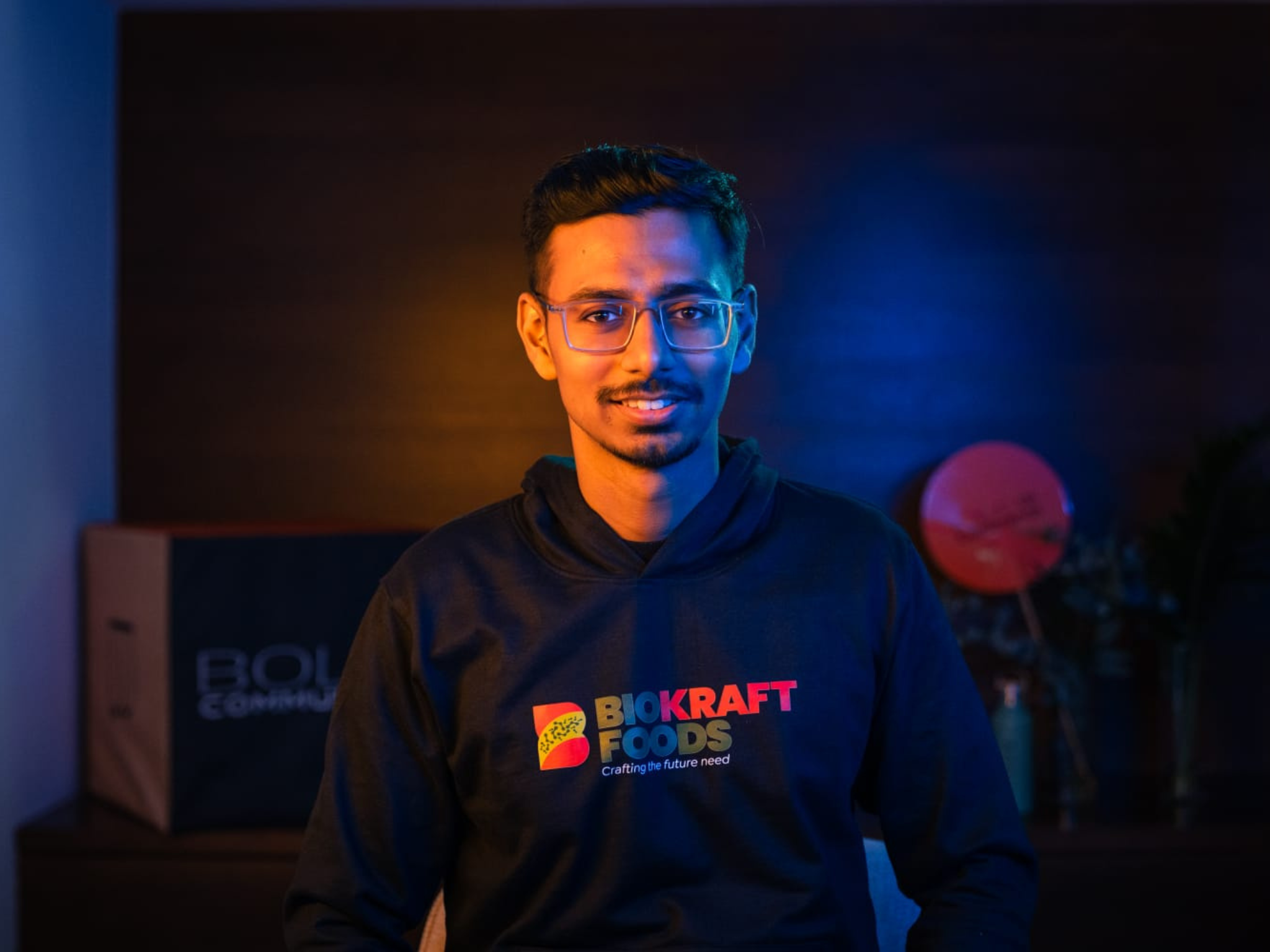




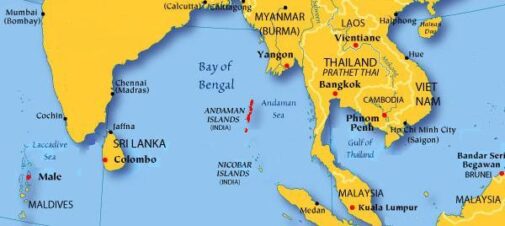



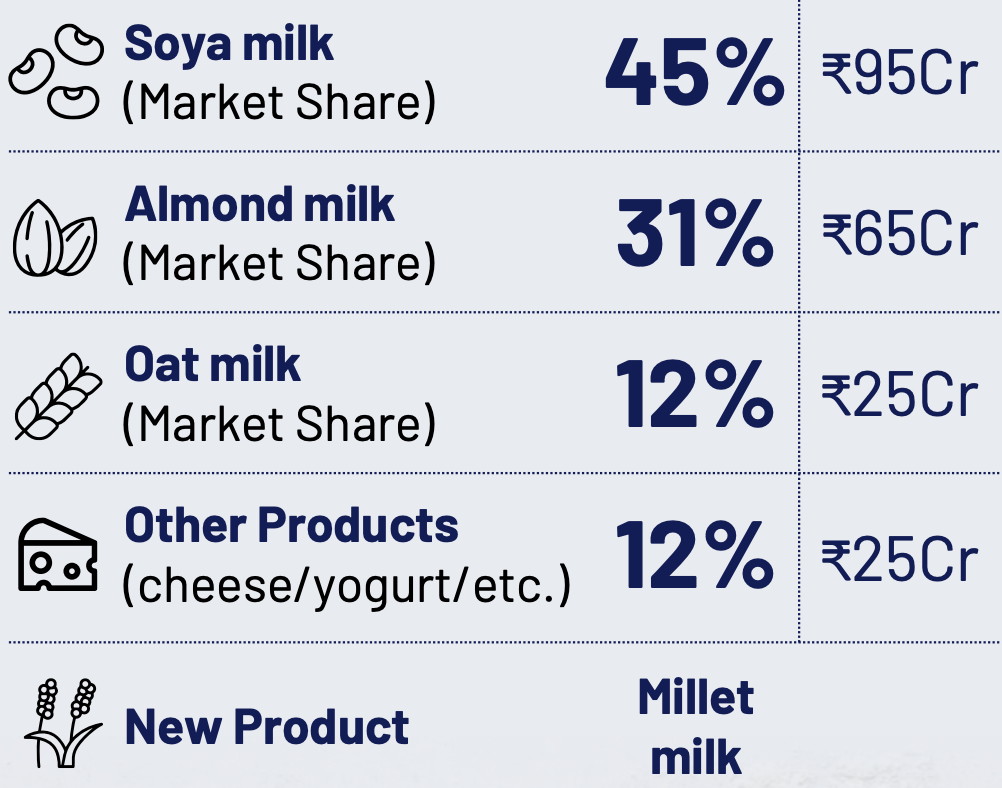
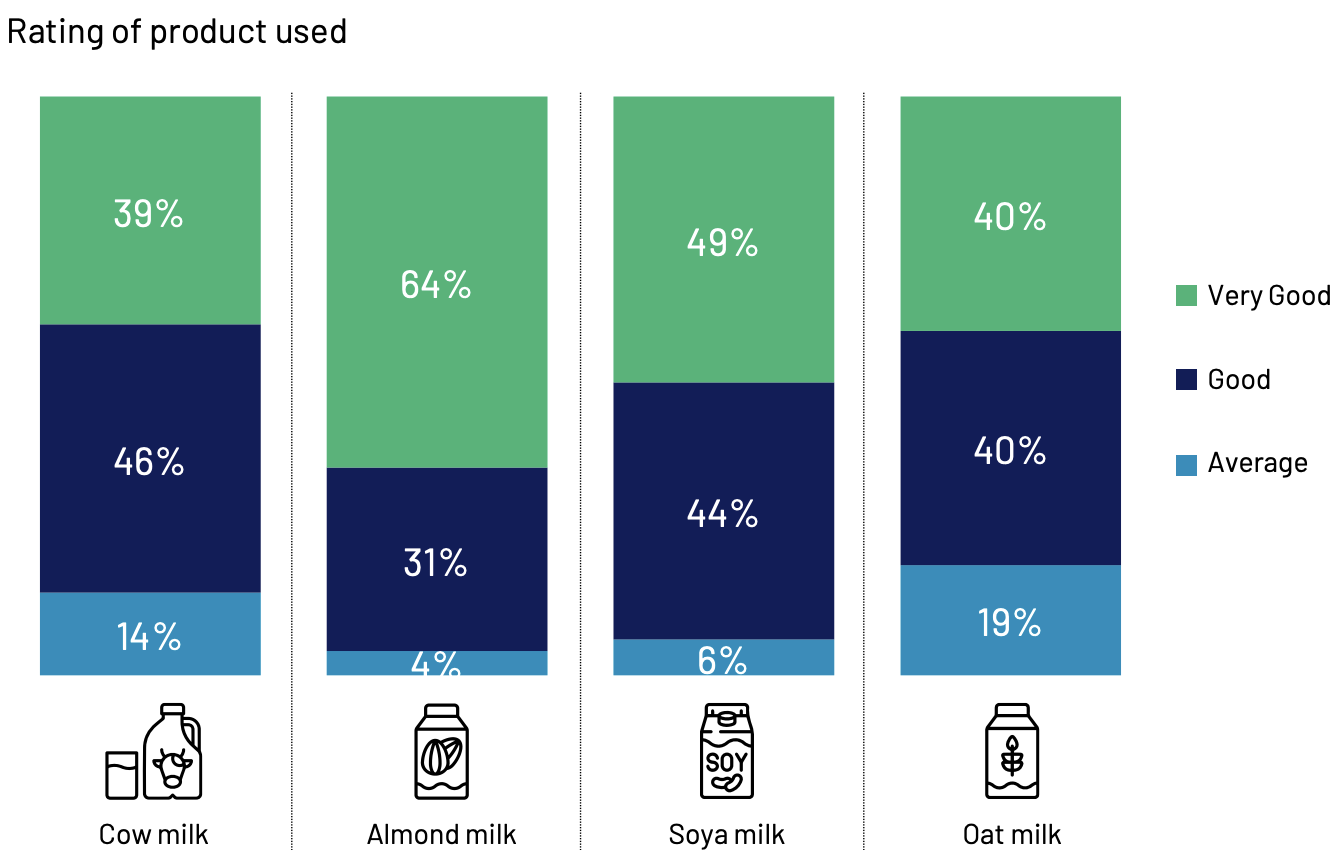

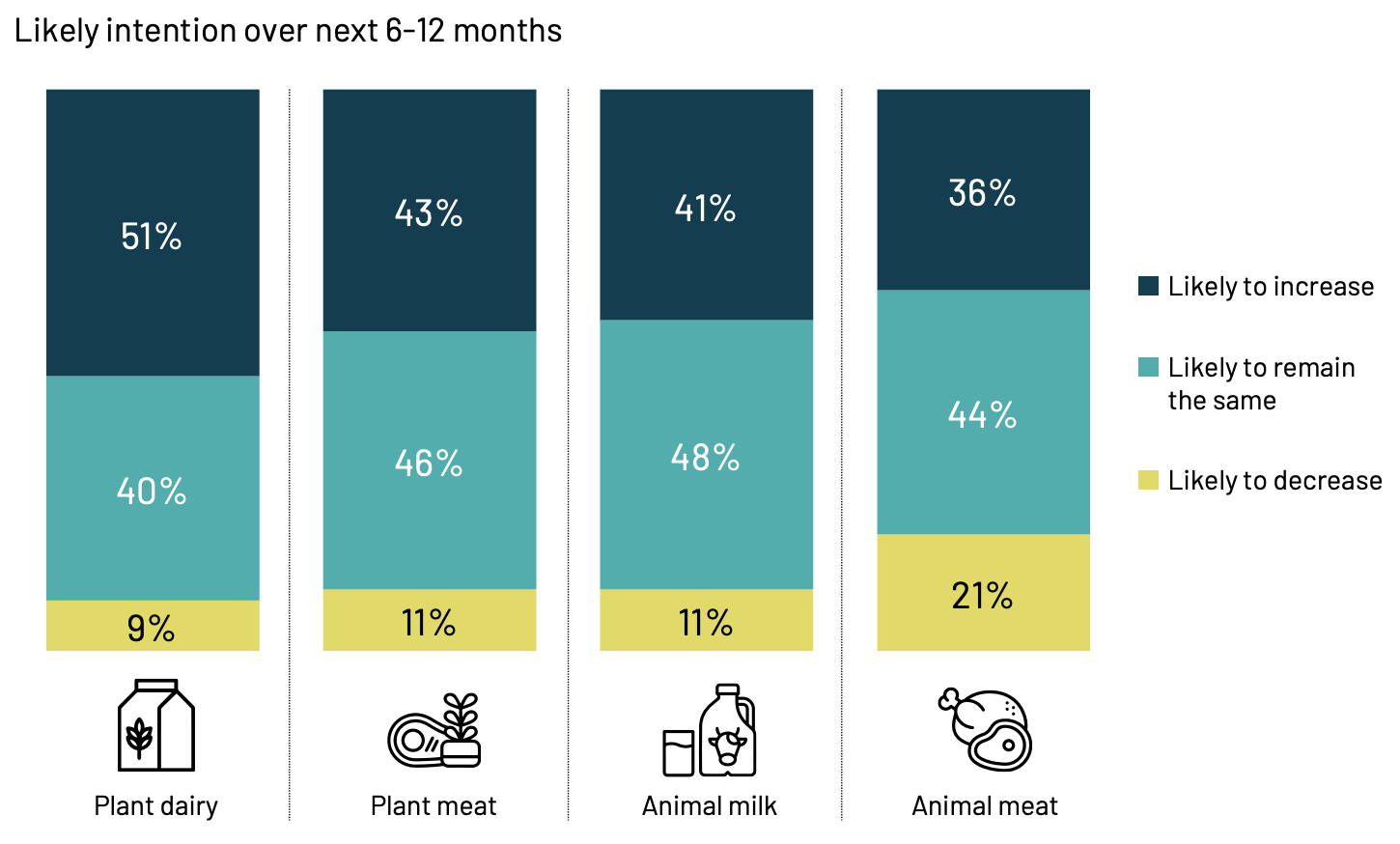



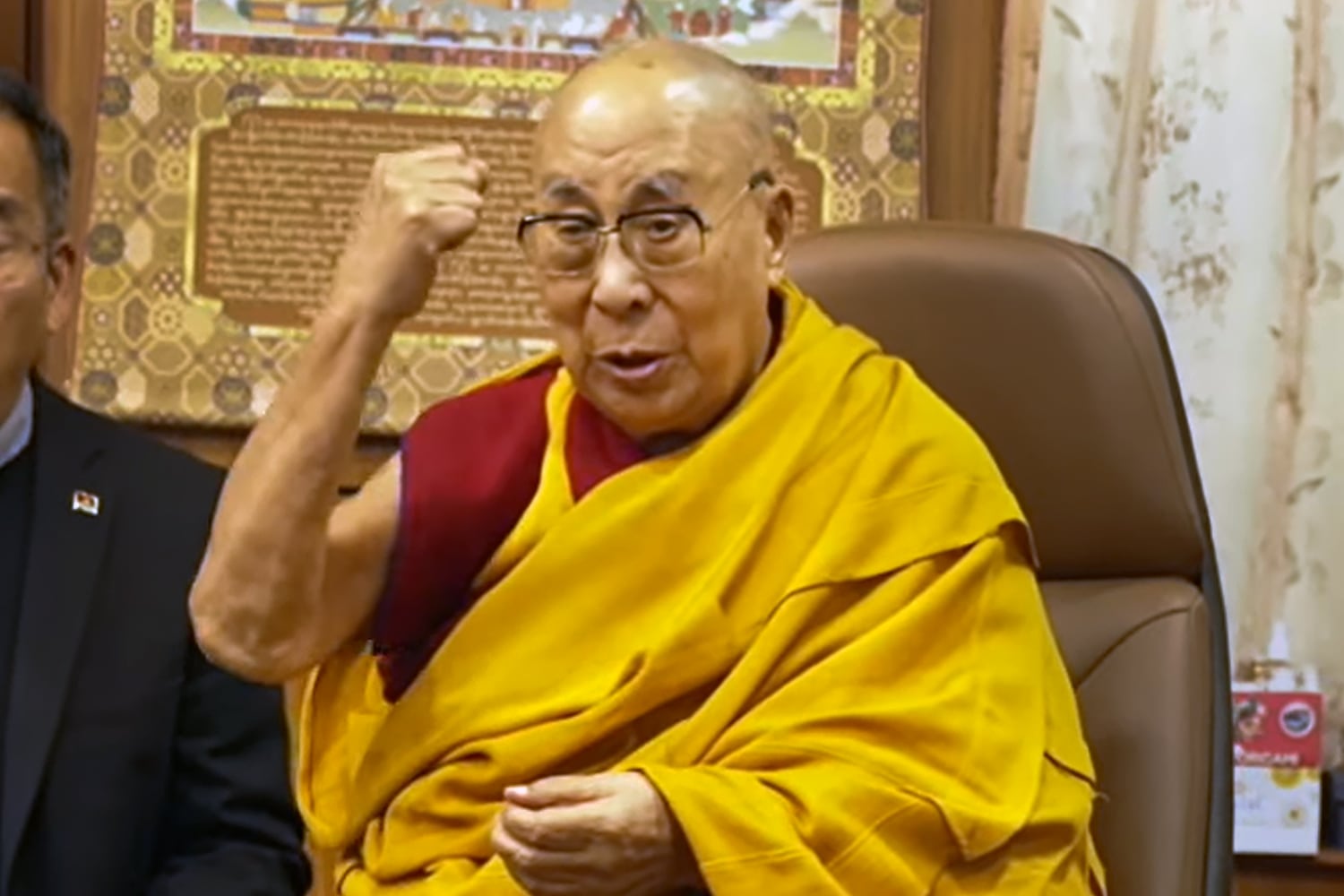

 Ruttie Jinnah and M.A. Jinnah IMAGE/
Ruttie Jinnah and M.A. Jinnah IMAGE/ IMAGE/Dr Muhammad Ali Shaikh/National Archives Islamabad/
IMAGE/Dr Muhammad Ali Shaikh/National Archives Islamabad/ Dina Wadia (extreme left), Quaid-i-Azam Mohammad Ali Jinnah’s only child, flew in to attend her father’s funeral. Second from right is Jinnah’s sister Fatima. PHOTO/The Press Information Department, Ministry of Information, Broadcasting & National Heritage, Islamabad/
Dina Wadia (extreme left), Quaid-i-Azam Mohammad Ali Jinnah’s only child, flew in to attend her father’s funeral. Second from right is Jinnah’s sister Fatima. PHOTO/The Press Information Department, Ministry of Information, Broadcasting & National Heritage, Islamabad/